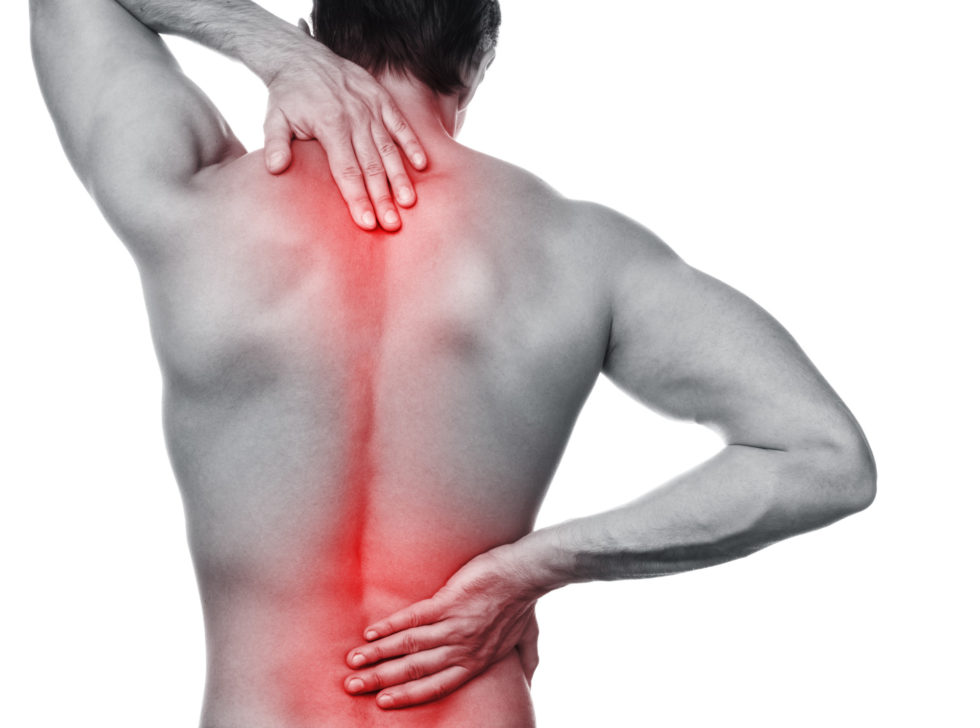Pain is an unwelcome companion that can interfere with our daily lives, whether it’s a persistent headache, sore muscles after a workout, or chronic back pain. While over-the-counter medications are a common solution, many people prefer to explore home remedies for pain relief.
Topcynta 100mg is a medication containing tapentadol, an opioid analgesic used for the management of moderate to severe pain. It is typically prescribed when other pain relief measures are not sufficient.
These natural alternatives can be just as effective and often come with fewer side effects. In this comprehensive guide, well explore the best home remedies for various types of pain, how they work, and tips for using them safely.
While Asmanol 100mg is effective for severe pain, many individuals seek alternative or complementary treatments to manage pain. Here are some home remedies and lifestyle changes that can help manage pain naturally.
Understanding Pain
Before diving into the remedies, it’s important to understand what pain is. Pain is a signal from the nervous system that something may be wrong. It can be sharp or dull, constant or intermittent, and can be localized to one area or spread out. Pain can be classified into two main types:
- Acute Pain: This type of pain is temporary and usually comes on suddenly as a result of injury or illness. Examples include a sprained ankle, a headache, or post-surgical pain.
- Chronic Pain: This is pain that lasts for a long time, often more than three months, and can persist even after the injury or illness that caused it has healed. Examples include arthritis, fibromyalgia, and chronic back pain.
Home remedies can be effective for both acute and chronic pain, though chronic pain often requires a more comprehensive approach.
Top Home Remedies for Pain Relief
Heat and Cold Therapy
Heat Therapy: Applying heat can help relax muscles and improve blood flow to the affected area, reducing pain and promoting healing. Use a heating pad, warm towel, or hot water bottle. For chronic conditions like arthritis, a warm bath can also be soothing.
Cold Therapy: Cold can help reduce inflammation and numb a painful area. Use an ice pack, a bag of frozen vegetables, or a cold compress. This is especially effective for acute injuries such as sprains, strains, and bruises.
How to Use:
- Apply heat or cold for 15-20 minutes at a time.
- Never apply heat or cold directly to the skin; wrap the source in a towel or cloth.
- For acute injuries, use cold therapy for the first 48 hours, then switch to heat.
Herbal Remedies
Turmeric: This spice contains curcumin, a compound with powerful anti-inflammatory properties. Adding turmeric to your diet or taking it as a supplement can help reduce pain, especially for conditions like arthritis.
Ginger: Known for its anti-inflammatory and antioxidant effects, ginger can help alleviate pain from conditions like osteoarthritis and muscle soreness. Drink ginger tea or incorporate fresh ginger into your meals.
Peppermint: Peppermint oil has menthol, which can provide a cooling sensation and help relieve muscle and joint pain. Dilute with a carrier oil and massage into the affected area.
How to Use:
- For turmeric, add a teaspoon to smoothies, soups, or teas.
- For ginger, drink two to three cups of ginger tea daily.
- For peppermint oil, mix a few drops with a carrier oil and apply to the skin as needed.
Essential Oils
Lavender Oil: Known for its calming properties, lavender oil can help reduce pain and improve sleep. It’s particularly effective for headaches and migraines.
Eucalyptus Oil: This oil has anti-inflammatory and analgesic properties. Its helpful for respiratory issues and muscle pain.
Rosemary Oil: Rosemary oil can help improve circulation and reduce inflammation, making it useful for muscle and joint pain.
How to Use:
- Add a few drops of essential oil to a diffuser or a warm bath.
- Mix with a carrier oil and massage into the affected area.
- For headaches, inhale directly from the bottle or apply to temples.
Exercise and Stretching
Regular Exercise: Staying active can help reduce pain over time by strengthening muscles, improving flexibility, and increasing endorphins. Activities like walking, swimming, and cycling are low-impact and beneficial for most people.
Stretching: Gentle stretching can relieve tension and improve range of motion. Yoga and tai chi are excellent practices that combine stretching with relaxation techniques.
How to Use:
- Aim for at least 30 minutes of moderate exercise most days of the week.
- Incorporate stretching into your daily routine, especially before and after exercise.
- Focus on areas of the body that are prone to pain or stiffness.
Mind-Body Techniques
Meditation: Practicing mindfulness meditation can help reduce the perception of pain and improve emotional well-being. It teaches you to focus on the present moment and can help break the cycle of chronic pain.
Deep Breathing: Deep breathing exercises can help relax the body and reduce pain. Techniques like diaphragmatic breathing and paced respiration can be particularly effective.
Progressive Muscle Relaxation: This involves tensing and then slowly relaxing each muscle group in the body. It can help reduce overall muscle tension and pain.
How to Use:
- Set aside 10-20 minutes daily for meditation or deep breathing.
- Find a quiet, comfortable place where you wont be disturbed.
- Follow guided meditations or breathing exercises if youre new to these practices.
Dietary Changes
Anti-Inflammatory Diet: Certain foods can help reduce inflammation and pain. Focus on eating fruits, vegetables, whole grains, lean proteins, and healthy fats.
Omega-3 Fatty Acids: Found in fish oil, flaxseeds, and walnuts, omega-3s have powerful anti-inflammatory effects. They can be particularly beneficial for joint pain and arthritis.
Hydration: Staying hydrated is crucial for overall health and can help reduce muscle cramps and tension headaches.
How to Use:
- Incorporate a variety of colorful fruits and vegetables into your diet.
- Consider taking an omega-3 supplement if you dont eat fish regularly.
- Aim to drink at least 8 glasses of water a day.
Acupressure and Acupuncture
Acupressure: This involves applying pressure to specific points on the body to relieve pain. Its based on the same principles as acupuncture but doesnt involve needles.
Acupuncture: A traditional Chinese medicine practice that involves inserting thin needles into specific points on the body. Its been shown to be effective for various types of pain, including chronic back pain, osteoarthritis, and headaches.
How to Use:
- For acupressure, learn the specific points related to your type of pain. Use your fingers to apply firm, steady pressure for a few minutes.
- For acupuncture, seek out a licensed practitioner. Sessions typically last 30-60 minutes and may be needed weekly.
Massage Therapy
Massage therapy can help reduce pain by improving circulation, relaxing muscles, and releasing endorphins. Different types of massage, such as Swedish, deep tissue, and trigger point therapy, can be effective for various types of pain.
How to Use:
- Schedule regular sessions with a licensed massage therapist.
- For self-massage, use tools like foam rollers or massage balls to target specific areas.
- Combine massage with other techniques like heat therapy for enhanced relief.
Sleep and Rest
Getting adequate rest and quality sleep is essential for pain management. Pain can interfere with sleep, and poor sleep can worsen pain, creating a vicious cycle.
How to Use:
- Establish a regular sleep routine, going to bed and waking up at the same time each day.
- Create a comfortable sleep environment, free of distractions and electronic devices.
- Practice relaxation techniques before bed, such as reading, listening to calming music, or taking a warm bath.
Hydration and Electrolytes
Proper hydration is crucial for overall health and can help alleviate certain types of pain, such as headaches and muscle cramps. Maintaining a balance of electrolytes is also important for muscle function.
How to Use:
- Drink plenty of water throughout the day, aiming for at least 8 glasses.
- Include electrolyte-rich foods in your diet, such as bananas, spinach, and avocados.
- Consider electrolyte supplements if you engage in intense physical activity or sweat heavily.
Combining Home Remedies for Optimal Relief
While each of these remedies can be effective on their own, combining them can often provide the best results. Here are a few examples of how to create a comprehensive pain relief plan:
- For Muscle Pain: Combine heat therapy, gentle stretching, and a topical application of peppermint oil. Follow with a massage and a warm bath with Epsom salts.
- For Headaches: Start with deep breathing exercises and lavender oil aromatherapy. Apply a cold compress to your forehead and practice acupressure on the web of your hand between your thumb and index finger.
- For Chronic Back Pain: Incorporate regular exercise and stretching into your routine. Use heat therapy and massage therapy, and consider dietary changes to reduce inflammation. Practice mindfulness meditation daily to manage stress and pain perception.
Safety Tips and Precautions
While home remedies can be effective, its important to use them safely:
- Consult with a Healthcare Provider: Always talk to your doctor before starting any new treatment, especially if you have underlying health conditions or are taking other medications.
- Allergies and Sensitivities: Be aware of any allergies or sensitivities you may have, particularly with herbal remedies and essential oils.
- Proper Dosage: Follow recommended dosages for supplements and essential oils. More is not always better and can sometimes be harmful.
- Listen to Your Body: Pay attention to how your body responds to different treatments. Discontinue use if you experience any adverse effects.
Conclusion
Home remedies for pain relief offer a natural and holistic approach to managing discomfort. Whether youre dealing with acute pain from an injury or chronic pain from a long-term condition, there are numerous options to explore.
By understanding how these remedies work and how to use them safely, you can create a personalized pain management plan that enhances your quality of life.
Always remember to consult with healthcare professionals to ensure that the remedies you choose are appropriate for your specific needs. With the right approach, you can find effective relief and take control of your pain naturally.




